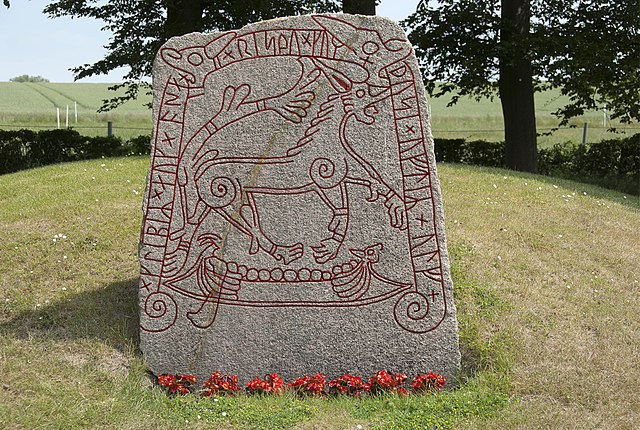Gleipnir is a significant element of Norse mythology, specifically associated with the binding of the wolf Fenrir. This powerful binding plays a pivotal role in the events leading up to Ragnarök, the Norse apocalypse. Here’s an exploration of the ancient Norse mythology behind Gleipnir:
1. The Creation of Gleipnir:
- Gleipnir is not a typical physical object but rather a magical binding specifically created to restrain the wolf Fenrir. It is said to be incredibly strong and unbreakable by conventional means.
2. The Context:
- Fenrir, also known as Fenrisúlfr, is one of the monstrous offspring of the trickster god Loki and the giantess Angrboða. As Fenrir grew, the gods became increasingly concerned about his immense size and strength. They foresaw that he would pose a great threat to them during Ragnarök.

3. The Prophecy of Ragnarök:
- In Norse mythology, Ragnarök is the prophesied end of the world, where gods and giants will engage in a final battle that will result in the destruction and renewal of the world. Fenrir’s role in this cataclysmic event is foretold in the Poetic Edda and Prose Edda, two primary sources of Norse mythology.
4. The Gods’ Fear:
- Fearing Fenrir’s power and potential destruction, the gods attempted to bind him on two previous occasions using chains and fetters, but Fenrir broke free both times. This led the gods to seek a different solution to restrain him.
5. The Binding of Gleipnir:
- The gods enlisted the help of the dwarves, skilled artisans and craftsmen, to create a binding that would be strong enough to hold Fenrir. The dwarves crafted Gleipnir from six impossible-to-find and unusual ingredients:
- The sound of a cat’s footfall.
- The beard of a woman.
- The roots of a mountain.
- The sinews of a bear.
- The breath of a fish.
- The spittle of a bird.
6. Deception and Trust:
- The gods approached Fenrir with the proposition of testing his strength by attempting to break the bindings. Fenrir, wary of the gods’ intentions, agreed to be bound only if one of them would place their hand in his mouth as a sign of trust. The god Tyr bravely agreed to this, knowing the risks.
7. Fenrir Bound:
- When Fenrir found himself unable to break Gleipnir’s bonds, he realized that he had been tricked. In response, he bit off Tyr’s hand as a symbol of his anger and betrayal.
8. The Role in Ragnarök:
- Fenrir remains bound by Gleipnir until the events of Ragnarök. During the final battle, he breaks free from his restraints and swallows the god Odin whole before being slain by Odin’s son, Víðarr.
Gleipnir represents the ingenuity and resourcefulness of the Norse gods in their efforts to mitigate the destructive forces that threatened the cosmos. It is a testament to the rich and complex mythology of the Norse tradition, where gods, giants, and mythical creatures played significant roles in the unfolding of cosmic events. Gleipnir’s role in the binding of Fenrir is a crucial element in the larger narrative of Ragnarök and the ultimate fate of the Norse gods and the world they inhabited.











